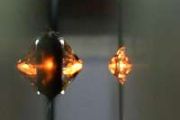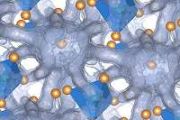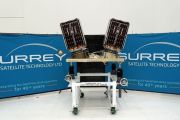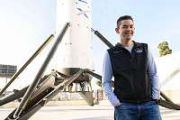
Copernical Team
SpaceX launches Falcon Heavy rocket for first time in three years
 SpaceX launched its Falcon Heavy rocket from Florida Tuesday, the first flight since 2019 of the world's most powerful rocket.
Mission USSF-44, transporting cargo for the US Space Force, including the TETRA 1 satellite, blasted off from the Kennedy Space Center around 9:40 am (1340 GMT).
Several minutes later, the rocket's two side boosters made their way back to Earth - the craft's m
SpaceX launched its Falcon Heavy rocket from Florida Tuesday, the first flight since 2019 of the world's most powerful rocket.
Mission USSF-44, transporting cargo for the US Space Force, including the TETRA 1 satellite, blasted off from the Kennedy Space Center around 9:40 am (1340 GMT).
Several minutes later, the rocket's two side boosters made their way back to Earth - the craft's m New lab module to assist space station's completion
 China's Mengtian space lab module, the third major component of the nation's Tiangong space station, was launched on Monday afternoon in a key step to complete the in-orbit assembly of Tiangong.
The lab module's carrier - a Long March 5B heavy-lift rocket - blasted off at 3:37 pm from the Wenchang Space Launch Center in the southernmost island province of Hainan.
After flying more th
China's Mengtian space lab module, the third major component of the nation's Tiangong space station, was launched on Monday afternoon in a key step to complete the in-orbit assembly of Tiangong.
The lab module's carrier - a Long March 5B heavy-lift rocket - blasted off at 3:37 pm from the Wenchang Space Launch Center in the southernmost island province of Hainan.
After flying more th DARPA awards Spire Global contract to design satellite
 Spire Global, Inc. (NYSE: SPIR), a leading global provider of space-based data, analytics and space services, was awarded a contract by the Defense Advanced Research Projects Agency (DARPA) to deliver a preliminary design for a satellite that would carry an array of sensors to very low Earth orbit (VLEO) for in-situ ionosphere measurements.
The award is part of DARPA's Ouija program, which
Spire Global, Inc. (NYSE: SPIR), a leading global provider of space-based data, analytics and space services, was awarded a contract by the Defense Advanced Research Projects Agency (DARPA) to deliver a preliminary design for a satellite that would carry an array of sensors to very low Earth orbit (VLEO) for in-situ ionosphere measurements.
The award is part of DARPA's Ouija program, which UNH research tests fundamental force advancing understanding of universe
 Research from a team of physicists at the University of New Hampshire is advancing the understanding of how protons, which comprise 95% of the mass of the visible universe, interact with each other. The results provide a benchmark for testing the strong force, one of the four fundamental forces in nature.
"There's a lot still unanswered about both of those things, the proton and the strong
Research from a team of physicists at the University of New Hampshire is advancing the understanding of how protons, which comprise 95% of the mass of the visible universe, interact with each other. The results provide a benchmark for testing the strong force, one of the four fundamental forces in nature.
"There's a lot still unanswered about both of those things, the proton and the strong SwRI experiment helps predict effects of DART impact
 On September 26, NASA's Double Asteroid Redirection Test (DART) spacecraft crashed into Dimorphos, a moonlet of the near-Earth asteroid Didymos, at 14,000 miles per hour. Prior to the impact, Southwest Research Institute engineers and scientists performed an experiment to study the cratering process that produces the mass of ejected materials and measures the subsequent momentum enhancement of t
On September 26, NASA's Double Asteroid Redirection Test (DART) spacecraft crashed into Dimorphos, a moonlet of the near-Earth asteroid Didymos, at 14,000 miles per hour. Prior to the impact, Southwest Research Institute engineers and scientists performed an experiment to study the cratering process that produces the mass of ejected materials and measures the subsequent momentum enhancement of t NASA's InSight spacecraft on Mars nears final days
 NASA's InSight spacecraft is nearing the end of its life after four years on Mars.
The Mars InSight lander was sent to the Red Planet in 2018 to study its crust, mantle and core. Heavy dust buildup on its solar panels, the chief source of its power supply, is bringing it within weeks of becoming inoperable, NASA said Tuesday.
Officials said the lander is operating at about 20% of
NASA's InSight spacecraft is nearing the end of its life after four years on Mars.
The Mars InSight lander was sent to the Red Planet in 2018 to study its crust, mantle and core. Heavy dust buildup on its solar panels, the chief source of its power supply, is bringing it within weeks of becoming inoperable, NASA said Tuesday.
Officials said the lander is operating at about 20% of Rocket Lab set to attempt next mid-air helicopter rocket catch
 Rocket Lab USA, Inc. (Nasdaq: RKLB) has confirmed that it will attempt to catch an Electron rocket with a helicopter as it returns to Earth from space during the Company's next launch.
Rocket Lab's 32nd Electron launch, the "Catch Me If You Can" mission, is scheduled to launch from Pad B at Rocket Lab Launch Complex 1 during a launch window opening on November 04, UTC.
Electron will carry
Rocket Lab USA, Inc. (Nasdaq: RKLB) has confirmed that it will attempt to catch an Electron rocket with a helicopter as it returns to Earth from space during the Company's next launch.
Rocket Lab's 32nd Electron launch, the "Catch Me If You Can" mission, is scheduled to launch from Pad B at Rocket Lab Launch Complex 1 during a launch window opening on November 04, UTC.
Electron will carry Experiment helps predict effects of DART impact
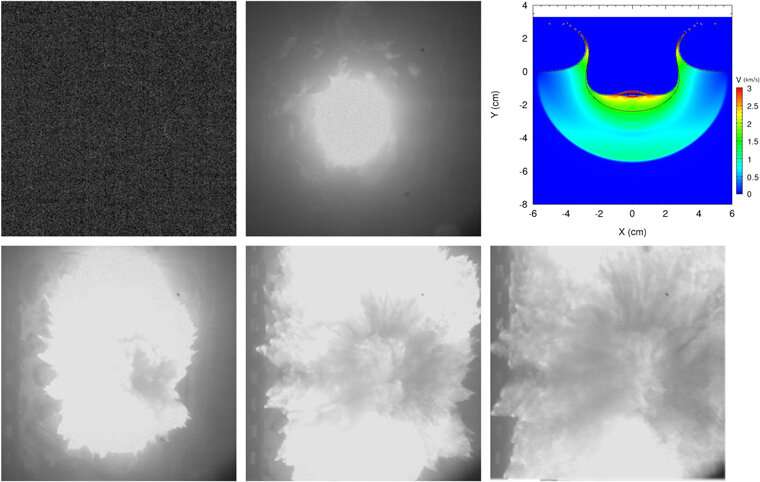
Surviving space: Extreme plant adaptation

Which plants have the best chances for survival in space?
That's the question being addressed by Principal Investigators Anna-Lisa Paul and Robert Ferl in the Epigenetic Adaptation to the Spaceflight Environment—Accumulated Genomic Change Induced by Generations in Space (Plant Habitat-03) investigation, which will soon launch to the International Space Station aboard Northrop Grumman's 18th commercial resupply services mission for NASA.
From one generation to the next?
This investigation will take advantage of the unique environment aboard the space station to study an intriguing phenomenon.
Heavy payload balloon lifted to near-space heights
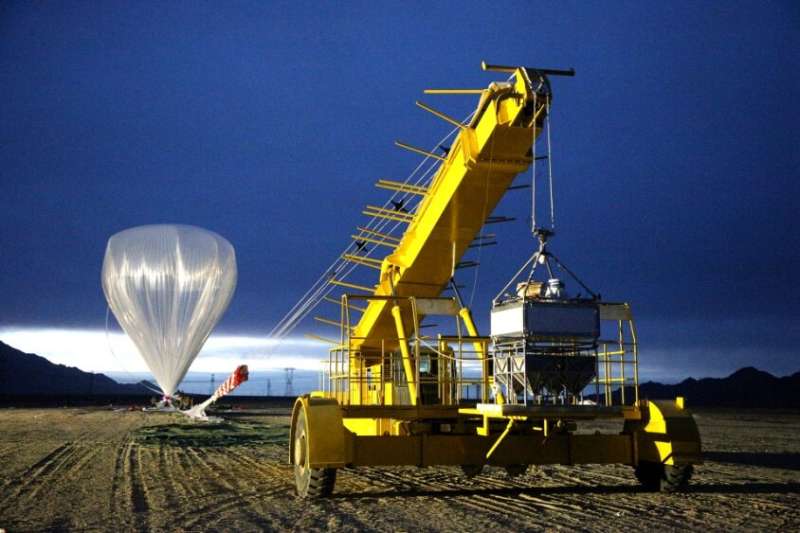
A high-altitude scientific balloon containing 1.2-ton payloads was lifted into the sky and reached an altitude of 30km in a demonstration test that helped validate the payload capacity of a near-space balloon platform.
The flight test was conducted in northwestern China's Qinghai Province on September 30, 2022, by a research team from the Aerospace Information Research Institute (AIR) of the Chinese Academy of Sciences (CAS), marking a further step in the development of China's high-altitude balloon platform.
Delivering payloads from the ground to the stratospheric region known as "near-space," the balloon platform can carry tons of scientific instruments, especially large-sized ones such as unmanned air vehicles over aerial-based launches.
-
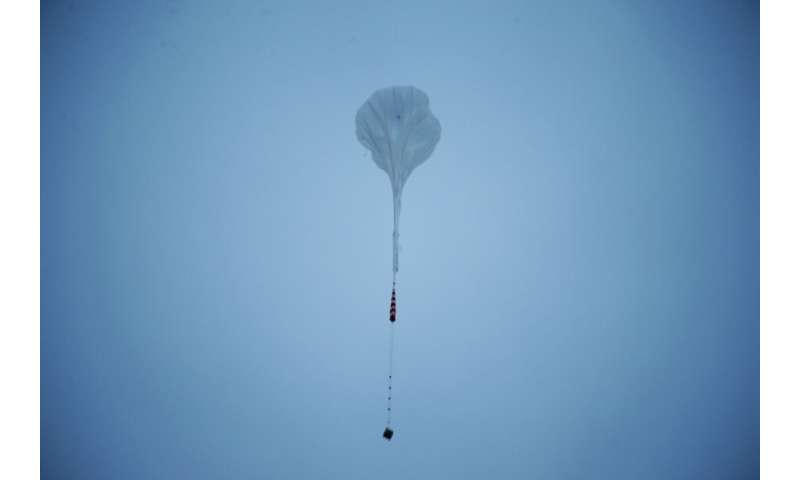
The balloon is ascending into the sky. Credit: AIR -
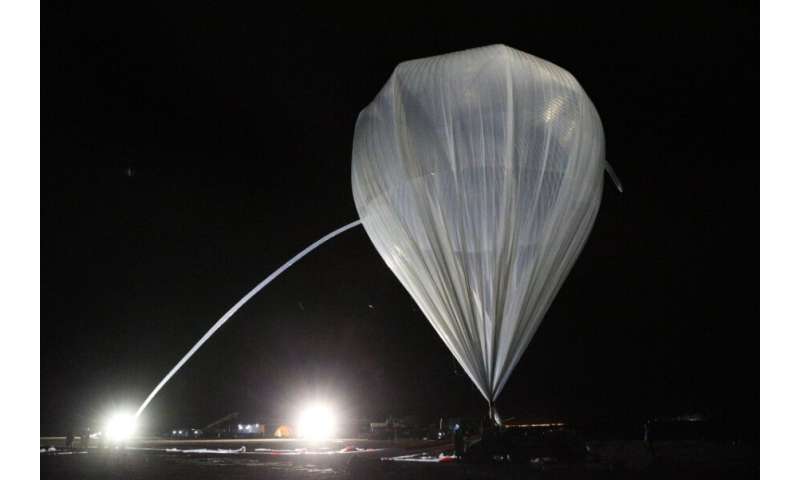
The balloon is inflated.


















